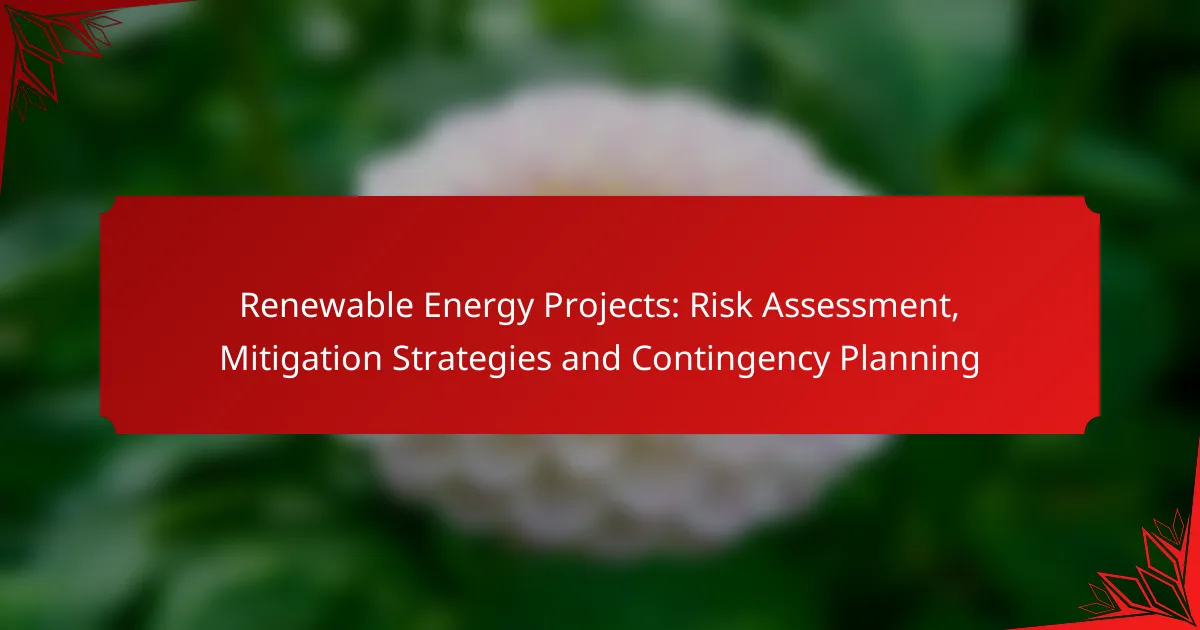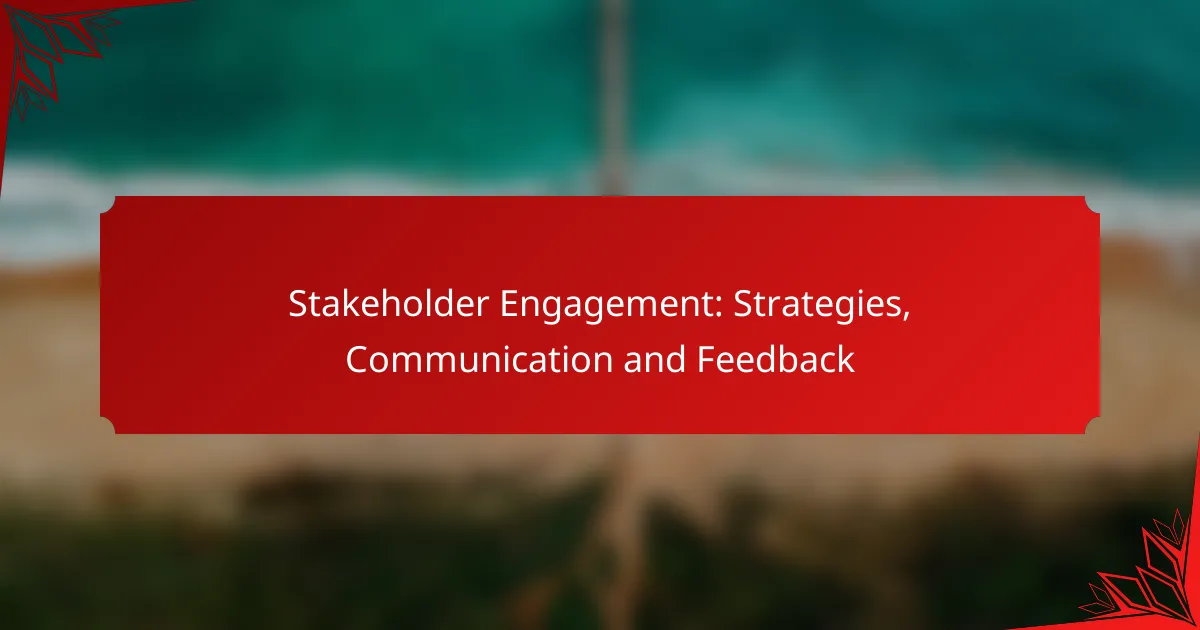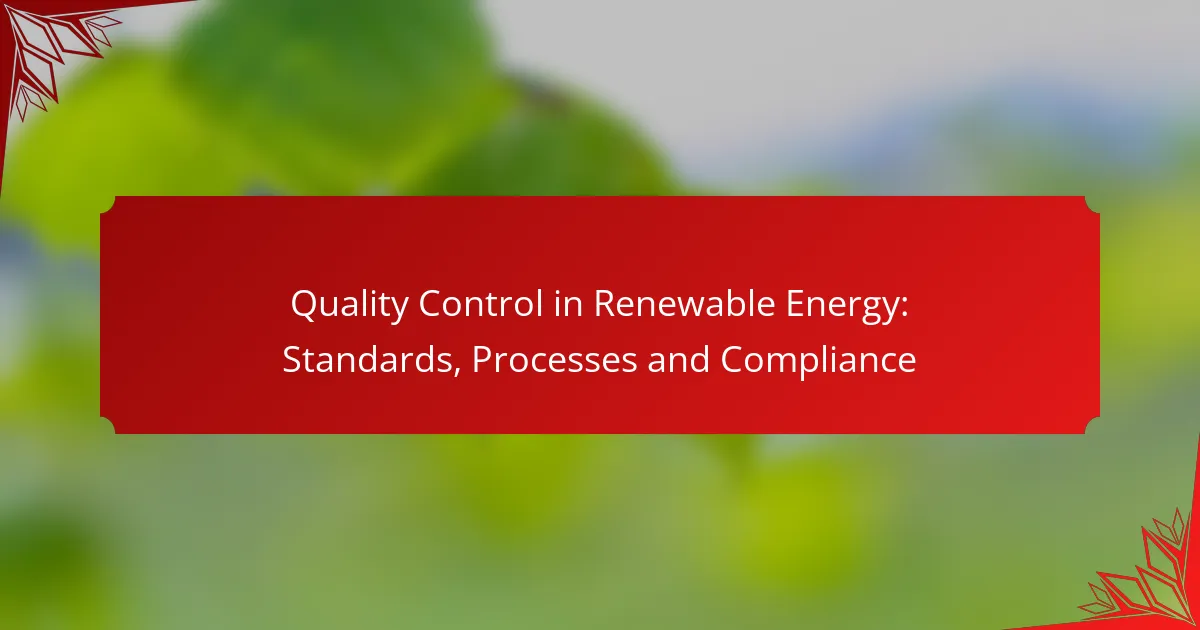Renewable energy projects are subject to various risks that can significantly affect their success and sustainability. A thorough risk assessment is crucial for identifying and prioritizing these challenges, allowing project managers to implement effective mitigation strategies and contingency plans. By addressing potential issues proactively, stakeholders can enhance the viability of renewable energy initiatives throughout their lifecycle.
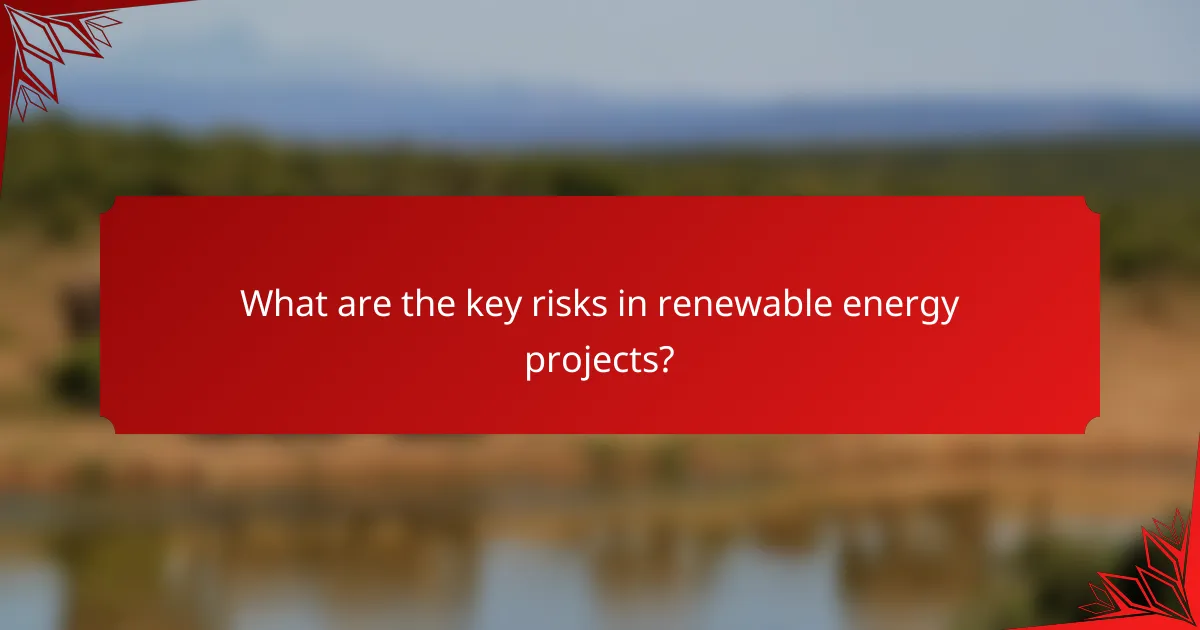
What are the key risks in renewable energy projects?
Renewable energy projects face several key risks that can impact their viability and success. Understanding these risks is essential for effective planning and management.
Financial risks
Financial risks in renewable energy projects often stem from high initial capital costs, fluctuating interest rates, and uncertain return on investment. Projects may require substantial funding, and any delays or cost overruns can significantly affect profitability.
To mitigate financial risks, project developers should conduct thorough financial modeling, including sensitivity analyses to account for potential changes in costs and revenues. Securing fixed-price contracts for equipment and services can also help stabilize budgets.
Regulatory risks
Regulatory risks involve changes in laws, policies, or incentives that can affect project feasibility. This includes shifts in government support for renewable energy, such as tax credits or subsidies, which can vary by region.
Staying informed about local regulations and engaging with policymakers can help anticipate changes. Additionally, diversifying project locations can reduce the impact of unfavorable regulatory shifts in any single area.
Technical risks
Technical risks are associated with the performance and reliability of renewable energy technologies. Issues such as equipment failure, underperformance, or integration challenges with existing infrastructure can pose significant threats.
To address technical risks, thorough due diligence on technology providers and regular maintenance schedules are crucial. Implementing pilot projects before full-scale deployment can also help identify potential issues early.
Environmental risks
Environmental risks include potential negative impacts on local ecosystems, wildlife, and communities. Projects may face opposition from environmental groups or local residents concerned about land use and biodiversity.
Conducting comprehensive environmental impact assessments (EIAs) before project initiation is essential. Engaging stakeholders early in the process can help address concerns and foster community support.
Market risks
Market risks arise from fluctuations in energy prices and demand, which can affect the revenue generated by renewable energy projects. Changes in competition from other energy sources can also impact market viability.
To mitigate market risks, developers should consider long-term power purchase agreements (PPAs) to lock in prices. Diversifying energy offerings and exploring emerging markets can also help stabilize income streams.
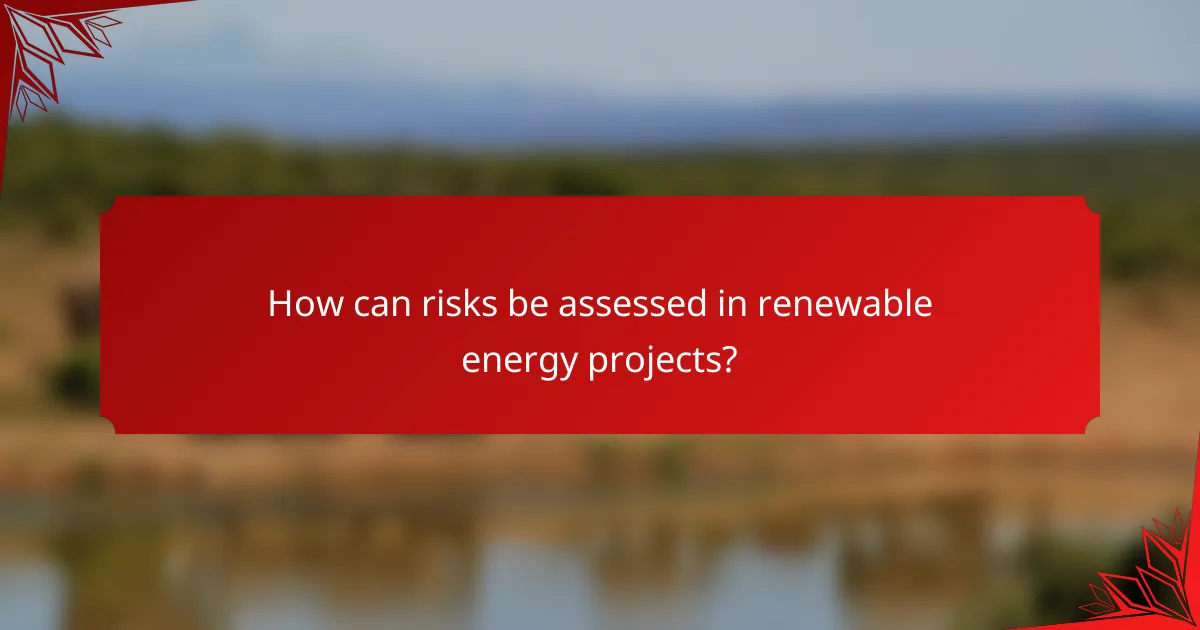
How can risks be assessed in renewable energy projects?
Risks in renewable energy projects can be assessed through various structured methods that help identify, analyze, and prioritize potential issues. Effective risk assessment enables project managers to develop strategies for mitigation and contingency planning, ensuring project success and sustainability.
Risk matrix approach
The risk matrix approach is a visual tool that categorizes risks based on their likelihood and impact. By plotting risks on a grid, project teams can easily identify which risks require immediate attention and which can be monitored over time.
To implement a risk matrix, define a scale for both likelihood (e.g., rare, unlikely, possible, likely, almost certain) and impact (e.g., negligible, minor, moderate, major, catastrophic). This allows for a clear prioritization of risks, helping teams focus their resources effectively.
Qualitative assessments
Qualitative assessments involve subjective evaluation of risks based on expert judgment and stakeholder input. This method is particularly useful when quantitative data is scarce or when assessing complex, multifaceted risks that are difficult to quantify.
Common techniques include interviews, focus groups, and brainstorming sessions. These assessments can provide valuable insights into potential risks and their implications, but they should be complemented with quantitative data for a more comprehensive view.
Quantitative modeling
Quantitative modeling uses statistical methods to analyze risks numerically, providing a more objective assessment. This approach often involves simulations, such as Monte Carlo analysis, which can predict the likelihood of various outcomes based on different risk scenarios.
When using quantitative modeling, it’s essential to gather accurate data and define clear parameters. This method can help in estimating potential financial impacts, allowing project managers to make informed decisions regarding risk mitigation strategies.
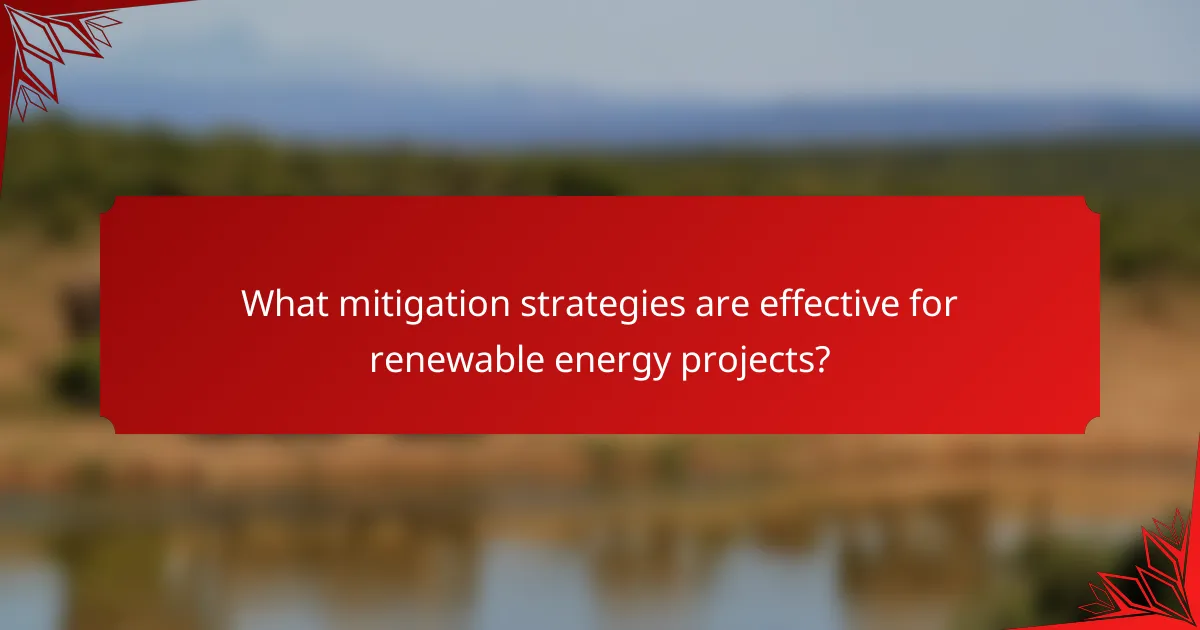
What mitigation strategies are effective for renewable energy projects?
Effective mitigation strategies for renewable energy projects include a combination of insurance solutions, stakeholder engagement, technology selection, and regulatory compliance. These strategies help minimize risks and enhance project viability throughout the project lifecycle.
Insurance solutions
Insurance is a critical tool for managing risks in renewable energy projects. Coverage options can include property insurance, liability insurance, and business interruption insurance, which protect against various unforeseen events that could impact project operations.
When selecting insurance, consider factors such as project scale, location, and specific risks associated with the technology used. Engaging with an insurance broker who specializes in renewable energy can help identify the most suitable policies.
Stakeholder engagement
Engaging stakeholders is essential for the success of renewable energy projects. This includes local communities, government agencies, and investors, as their support can significantly influence project outcomes.
Effective stakeholder engagement involves transparent communication, addressing concerns, and incorporating feedback into project planning. Regular updates and community meetings can foster trust and collaboration, reducing the likelihood of opposition or delays.
Technology selection
The choice of technology directly impacts the risk profile of renewable energy projects. Selecting reliable and proven technologies can reduce operational risks and enhance efficiency.
Consider factors such as performance history, maintenance requirements, and compatibility with local conditions when evaluating technology options. Pilot projects or simulations can also provide insights into potential challenges before full-scale implementation.
Regulatory compliance
Adhering to regulatory requirements is crucial for mitigating risks in renewable energy projects. Compliance ensures that projects meet safety, environmental, and operational standards set by local and national authorities.
Stay informed about relevant regulations and engage with legal experts to navigate the compliance landscape effectively. Regular audits and assessments can help identify potential compliance issues before they escalate into significant problems.

What is contingency planning in renewable energy projects?
Contingency planning in renewable energy projects involves preparing for unexpected events that could disrupt operations or project timelines. It ensures that there are predefined strategies to address potential risks, minimizing their impact on project success.
Defining contingency plans
Contingency plans are structured approaches that outline specific actions to take when unforeseen circumstances arise. These plans typically include risk assessment, resource allocation, and clear roles for team members. By identifying potential risks early, project managers can develop effective responses to mitigate negative outcomes.
A well-defined contingency plan should be flexible enough to adapt to various scenarios, ensuring that the project can continue with minimal disruption. Regular updates and reviews of these plans are essential to address new risks as they emerge throughout the project lifecycle.
Importance of contingency planning
Contingency planning is crucial for maintaining project stability and ensuring timely completion. It helps project teams respond quickly to challenges such as equipment failures, regulatory changes, or natural disasters. Without a solid plan, projects may face significant delays and increased costs.
Moreover, having contingency measures in place can enhance stakeholder confidence, as it demonstrates a proactive approach to risk management. This can lead to better relationships with investors and regulatory bodies, ultimately supporting project sustainability.
Examples of contingency measures
Contingency measures can vary widely depending on the specific risks associated with a renewable energy project. Common examples include backup power systems, alternative suppliers for critical components, and emergency response protocols for environmental incidents. Each measure should be tailored to the unique challenges of the project.
For instance, a solar farm might implement a contingency plan that includes securing additional land for expansion in case of increased demand. Wind energy projects may establish agreements with nearby facilities to share resources during maintenance outages. These proactive strategies can significantly reduce downtime and financial losses.
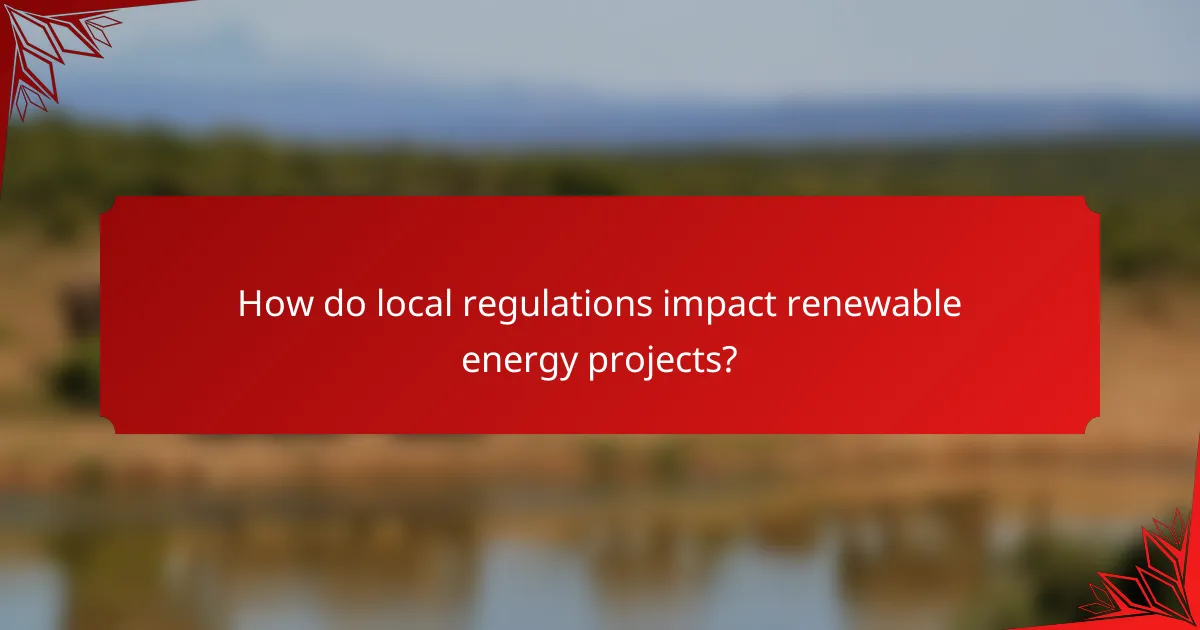
How do local regulations impact renewable energy projects?
Local regulations significantly influence renewable energy projects by dictating the legal framework within which these initiatives must operate. Compliance with zoning laws, permitting processes, and environmental assessments can affect project timelines and costs.
State-specific regulations
Each state in the U.S. has its own set of regulations that govern renewable energy projects, including solar, wind, and biomass. These regulations can vary widely, impacting everything from site selection to technology deployment. For instance, some states may have streamlined permitting processes for solar installations, while others may impose stricter environmental reviews.
Understanding state-specific regulations is crucial for project developers. They should familiarize themselves with local laws regarding land use, utility interconnection standards, and renewable portfolio standards (RPS). Engaging with local authorities early in the planning phase can help identify potential hurdles and facilitate smoother project execution.
Additionally, developers should consider incentives or subsidies offered by state governments, which can significantly enhance the financial viability of renewable energy projects. These incentives may include tax credits, grants, or rebates aimed at promoting clean energy adoption.
